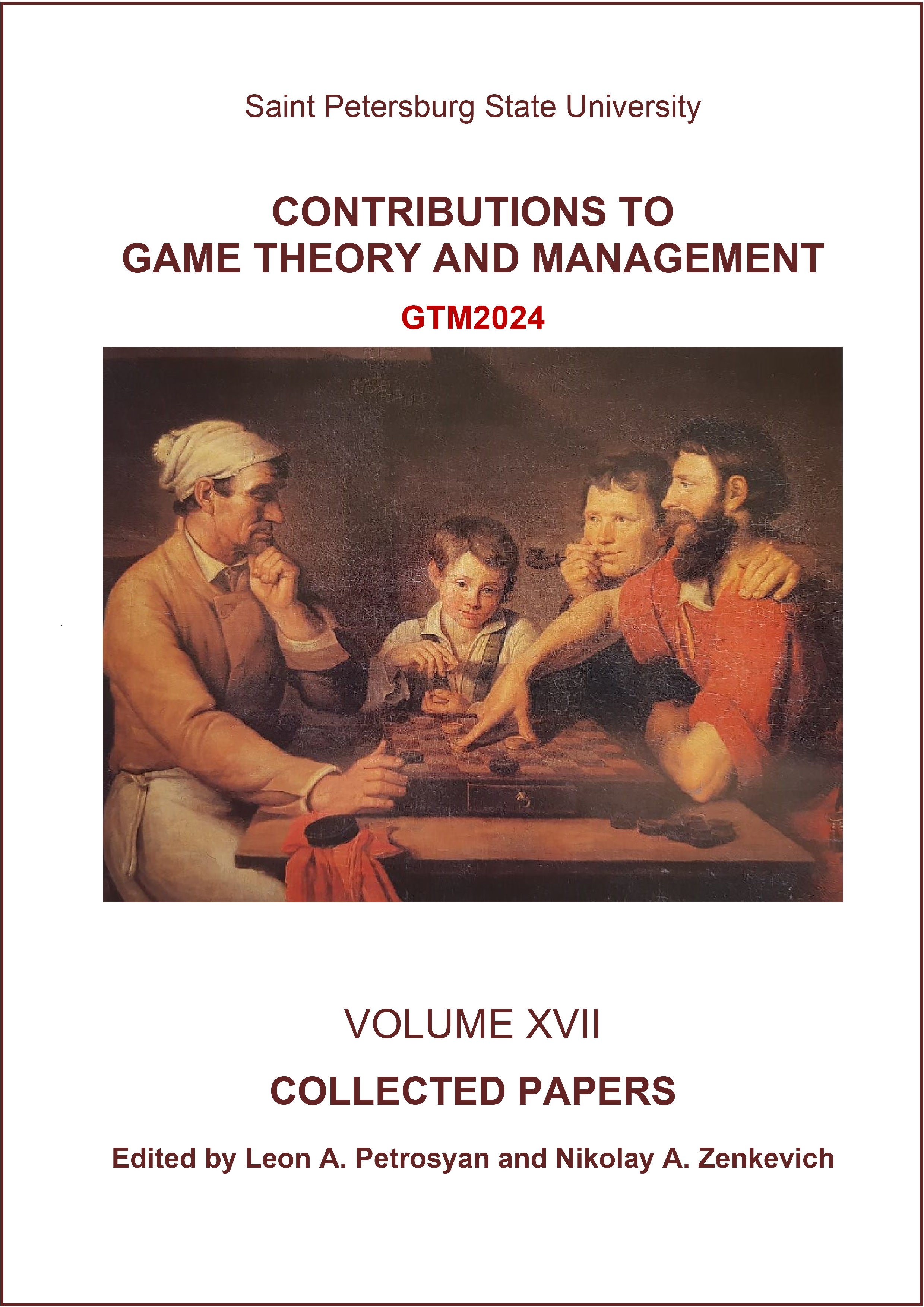E-Games: A Very Short Introduction
Abstract
The Dirichlet’s Unit Theorem describes the structure of the group of units as follows: let K be an algebraic number field with r1 real and 2r2 complex embeddings and ring of integers OK . Then the group of units of OK is equal to the direct product of the finite cyclic group E(K) of roots of unity contained in K and a free abelian group of rank r := r1 + r2 − 1. Dirichlet’s E-symbol ("container" of the numbers of a special type) became the object of Nikolai Bugaev’s mathematical dissertation.Bugaev and his followers of Moscow’s Philosophical Mathematical School have attempted to develop a sort of E-games which we define today as noncooperative signaling games in post-Quantum perspective. Our very short introduction in E-games describes historical circumstances and the reasons for introduction of E-games in post-quantum game theory. Fundamental Riemann problem and ABC conjecture in Number theory are considered also as an examples of E-game, hence, game-theoretical approach in Number theory is firstly justified.
Keywords:
acausality, Schopenhauer, Moscow’s Philosophico-Mathematical School, Bugaev, penny-flip game, 2+1 players game, quantum leadership, E-game, signaling game, Riemann problem, ABC conjecture
Downloads
References
Bugaev, N. V. (1866). Numerical equalities associated with a symbol E characteristics. Mathematical Sbornik, 1(1), 1–162 (in Russian).
Bugaev, N. V. (1879). Solution of a particular question of chess game using numerical function. Mathematical Sbornik,9(3), 355–360 (in Russian).
Bugaev, N. V. (1891). Discontinuous Geometry. Mathematical Sbornik, 5(3), 600–607 (in Russian).
Bugaev, N. V. (1905). Introduction in Number Theory. Mathematical Sbornik, 25(2), 334–348 (in Russian).
Bugaev, N. V. (1905). Mathematics and scientific-philosophical perception of the World. Mathematical Sbornik, 25(2), 349–369 (in Russian).
Dey, I et al. (2023). Quantum game theory meets Quantum networks. ArXiv: 2306.08928v1.( cs:NI): 15 June.
Dilmegani, C. (2022). In Depth Guide to Quantum AI. AI Multiple Research, Dec 22.
Cho, I-K., Kreps, D. M. (1987). Signaling games and Stable Equilibria. The Quarterly Journal of Econ, 102(2), 179–221.
Crawford, V. P., Sobel, J. (1982). Strategic Information Transmission. Econometrica, 50(6), 1431–1451
Crossman, S. J., Perry, M. (1986). Perfect sequential equilibrium. Journal of Economic Theory, 39(1), 97–119
Frackiewich, P., Szopa, M. (2024). Permissible extensions of classical quantum games combining three strategies. Quantum Information Processing, 23, article number 75.
Khan, F. S. et al. (2018). Quantum Games: a review of the history,current state and interpretation. Quantum Information Processing, 17, article number 309.
Kostler, A. (1974). The roots of coincidence. The Chaucer Press: Bungay, Suffolk
Kohlberg, E., Mertens, J - F. (1986). On strategic Stability of Equilibria. Econometrica, 54, 1003–1037.
Leung, M. C. (2011). Classical vs Quantum Games: Continuous- Time evolutionary strategy dynamics. ArXiv: 3953v1 (quant-ph):20 Apr
Meyer, D. A. (1999). Quantum Strategies. Phys. Rev.Lett, 82(5),1052–1055.
Nekrasov, P. A. (1902). Philosophy and logical science on mass expressions of human activity. Mathematical Sbornik, XXIII. Moscow University Publisher: Moscow (in Russian).
Nekrasov, P. A. (1904). Moscow's Philosophico-Mathematical School and its founders. Mathematical Sbornik, 1, 3–249 (in Russian).
Nekrasov, P. A. (1916). Functional equation studies of chess and nard competitions. Mathematical Sbornik, 30(2), 344–384 (in Russian).
Mochizuki, S. (2024). On the essential logical structure of the Inter-Universal Teichmuller theory in terms of logical relations. https://www.kurims.kyoto-u.ac.jp/ motizuki/papers-japanese.html.
Molina-Terriza, G., Zeilinger, A. et al. (2004). Experimental Quantum Coin Tossing. ArXiv: 0404.027v1 [quant - ph].
Popov, M. A. (2009). P vs NP Problem in the field anthropology. arXiv: 0904.3074 [computer sciences]
Reny, Ph. (2024). Natural Language Equilibrium: signaling games. Nuffield Economic Theory Seminar University of Oxford. Michaelmas Term, 1 week, 18 October.
Downloads
Published
How to Cite
Issue
Section
License
Articles of "Contributions to Game Theory and Management" are open access distributed under the terms of the License Agreement with Saint Petersburg State University, which permits to the authors unrestricted distribution and self-archiving free of charge.




